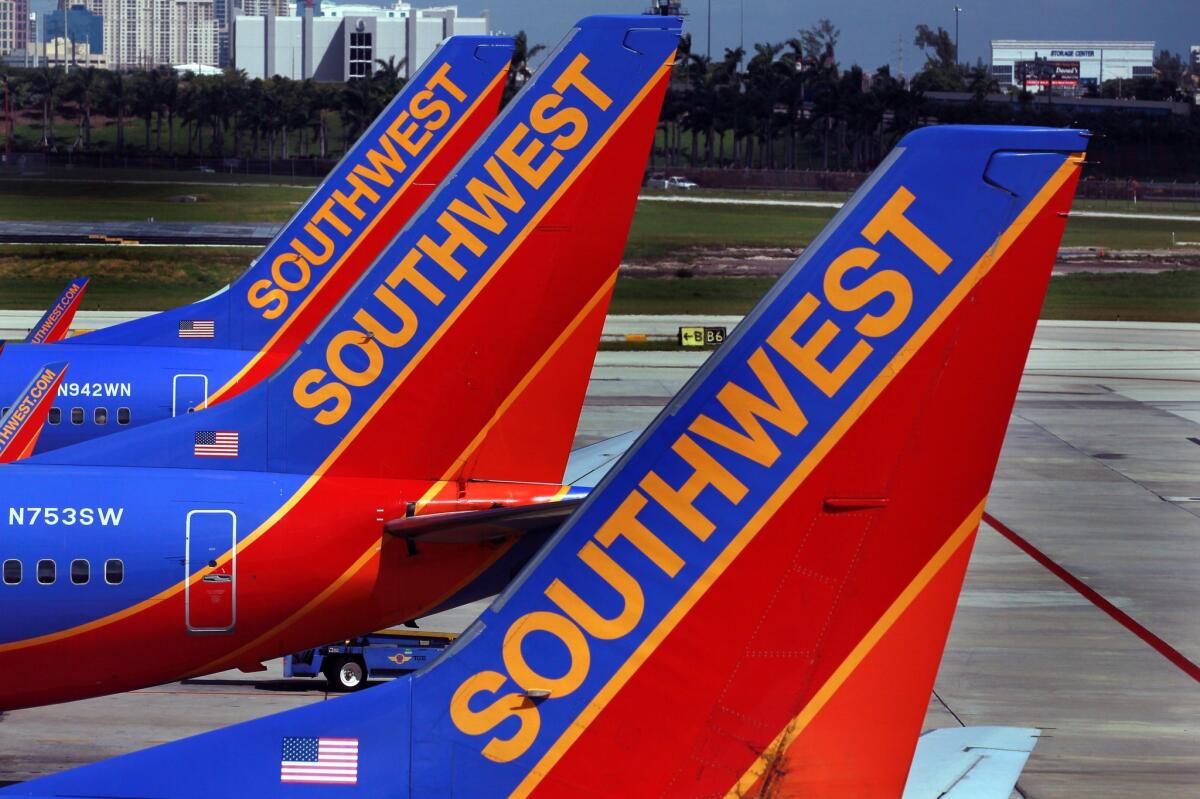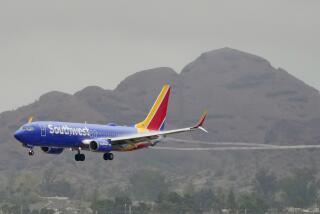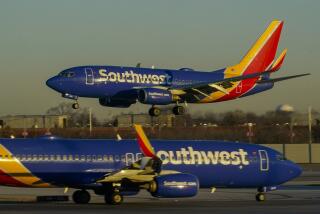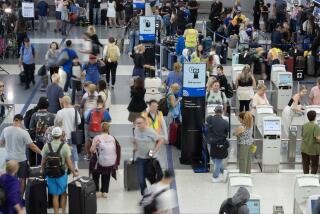The real story behind the collapse in Southwest’s on-time performance

Starting last fall, passengers on Southwest Airlines’ usually reliable flights began noticing a sharp deterioration in on-time performance. More flights arrived late, and more flights sat on the ground past their departure times, waiting for connecting passengers from flights that arrived late, and so on and so on.
Luckily for Southwest, the airline had built up a reservoir of goodwill from years of low-frills but effective service so that its statistics on customer complaints didn’t soar even as its on-time performance collapsed. The airline explained to the press, blandly, that its problems were caused by “scheduling too many flights at the most popular takeoff times,” and shortening the turn -- the time set aside for loading and unloading passengers -- to accommodate the super-packed schedule.
Now, courtesy of Brett Snyder of the popular travel website crankyflier.com, we’re getting a fuller explanation. The problem was caused by Southwest’s deliberate, and very ill-advised, strategy to cram more flights into its schedule without expanding its aircraft fleet and while adding seats to its existing planes.
The carrier looked at its performance during 2012, a mild weather year, and decided to roll the dice that it could squeeze more out of the same collection of stones. As Snyder puts it, “Southwest was going to operate the equivalent of 16 new airplanes’ worth of flying without increasing its fleet at all.”
It was wrong, with disastrous results. Southwest has spent much of the last year trying to undo the damage. It’s still not home; in August, according to FAA figures, the airline’s on-time performance still lagged all domestic carriers by a couple of percentage points. In early 2013, Southwest was consistently beating the industry in on-time arrivals.
The story Snyder tells, based on an interview with Southwest Executive Vice President Michael G. Van de Ven, is one of surprising miscalculation in an industry with very tight operational margins. Indeed, Southwest’s operational standards were even tighter than most, with turn times as brief as 25 minutes. (Snyder conducted the interview in early September during an airline media event for which Southwest paid for Snyder’s airfare and lodging.)
Southwest implemented its new, extra-packed schedule in August 2013, hoping to exploit strong travel demand and strong fares. By November and December, it was already clear that the schedule’s demanding tolerances could only be met on days with near-perfect weather and no mechanical mishaps--and those were rare days indeed.
Its passengers-per-plane, or “load factors,” had risen, making it harder to load and unload passengers to meet its narrow turn times. As Southwest’s service cities had expanded, more passengers were checking bags, another obstacle to quick turns. Even a five-minute delay in an early flight reverberated through the day, so that an aircraft might be as much as an hour off-schedule by its last flight.
Amazingly, Snyder reports, Southwest was unable to quickly revise its schedule to eliminate delays because of its antiquated reservations system, which couldn’t accommodate a large number of schedule changes. Only this year was the airline able to implement a new schedule, starting in August.
As Southwest officials explained to Snyder, turn times for even the smaller-capacity Boeing 737s in the carrier’s fleet were increased to 35 minutes, and on larger-capacity planes as much as 50 minutes. Gate-to-gate timings have been lengthened.
Southwest has also eliminated the tightest connecting times in its schedule--it wasn’t unusual for travelers to have only 25 minutes to get to their connecting flights, which often meant a sprint from a late-arriving flight or an extra delay as the receiving aircraft waited for passengers. Now the system minimum is 35 minutes and even longer in busy hub airports such as Chicago/Midway. Some frequent fliers may soon discover that their old tight-connecting itineraries are no longer available.
Whether Southwest paid a material price for its scheduling snafu is hard to tell. Revenue and profit for the first quarter this year was down on a quarter-to-quarter basis, but that may reflect seasonal travel patterns. The company reported a record quarterly profit of $465 million in the second quarter this year, ended June 30.
Southwest’s on-time record already has improved; on-time flights from Aug. 10 through Monday reached 78.4%, according to the aviation industry consulting firm masFlight. That’s Southwest’s best record since November, and came despite continuing problems in Chicago--also suffered by United and Delta--since a fire at the Chicago traffic control center Sept. 26. The company says “our internal indicators signal that our on-time performance is back on track,” though it also cites the Chicago fire for a decline in its performace at Midway.
The airline says it’s still working to build on-time performance to the 85% range. That would be a real achievement, restoring Southwest’s luster as not only an inexpensive, but efficient, carrier.
Keep up to date with the Economy Hub. Follow @hiltzikm on Twitter, see our Facebook page, or email [email protected].
More to Read
Inside the business of entertainment
The Wide Shot brings you news, analysis and insights on everything from streaming wars to production — and what it all means for the future.
You may occasionally receive promotional content from the Los Angeles Times.











